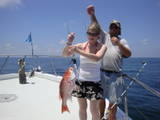I am on an email notice list with Puget Sound Clean Air Agency and they’ve sent out a notice that the first burn ban of the year has been put into effect in Pierce County. Here is their release in its entirety:
Message from the Puget Sound Clean Air Agency
Stage 1 burn ban called for Pierce County
First Puget Sound-area burn ban of the season and first since a new state law went into effect
January 16, 2009 — Due to stagnant weather conditions and increasing air pollution levels, the Puget Sound Clean Air Agency is issuing a Stage 1 burn ban for Pierce County, effective at noon, January 16, 2009.
Air pollution levels in King, Snohomish and Kitsap counties do not warrant implementation of a Stage 1 burn ban at this time. Clean Air Agency staff are closely monitoring these conditions and will take additional actions as necessary if conditions degrade to unacceptable levels.
Stagnant weather conditions are entrenched over the Puget Sound area and are expected to persist through Monday. These conditions greatly increase the potential for air pollution to reach levels considered unhealthy for sensitive population groups, especially in Pierce County. In many areas persistent fog and mixing are providing some benefit and helping to keep pollution levels in acceptable ranges.
During a Stage 1 burn ban:
- No burning is allowed in fireplaces or uncertified wood stoves, unless this is your only adequate source of heat. Residents should rely instead on their home’s other, cleaner source of heat (such as their furnace or electric baseboard heaters) for a few days until air quality improves, the public health risk diminishes and the ban is cancelled.
- Natural gas, propane and pellet stoves or inserts ARE allowed.
No visible smoke is allowed from any wood stove or fireplace, certified or not, beyond a 20-minute start-up period. - All outdoor burning is prohibited, even in areas where outdoor burning is not permanently banned. This includes recreational fires such as bonfires, campfires and the use of fire pits and chimineas.
- Burning of storm and flood damage debris is also prohibited.* The Clean Air Agency encourages people to take advantage of free flood-debris disposal coordinated by their county.
- Burn ban violations are subject to a $1,000 penalty.
This ban is in effect until further notice.
Clean Air Agency staff will continue to monitor the situation to determine when the burn ban can be lifted. You can check conditions and forecasts at www.pscleanair.org/airq/aqi.aspx .
The Washington State Department of Health recommends that people who are sensitive to air pollution limit time spent outdoors. Air pollution can trigger asthma attacks, cause difficulty breathing, and make lung and heart problems worse. Air pollution is especially harmful to children, people with heart and lung problems, and adults over age 65.
This is the first burn ban of the season and the first since a new state law went into effect lowering the air-quality trigger for calling a burn ban. The trigger level was lowered to align with the U.S. Environmental Protection Agency (EPA) health standard for fine particle pollution, which was tightened in 2006 to better protect public health. Answers to frequently asked questions about burn bans can be found at www.pscleanair.org/airq/burnban/faqs.aspx .
For additional information visit www.pscleanair.org

